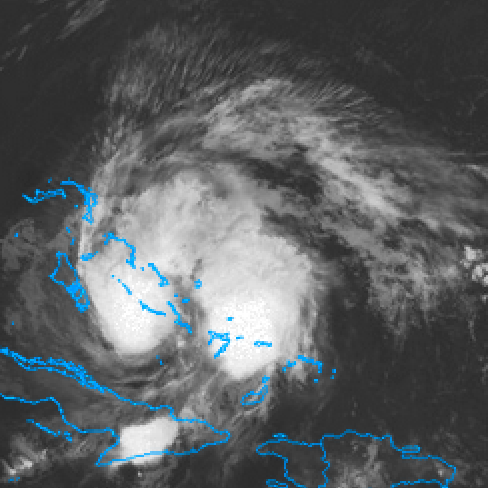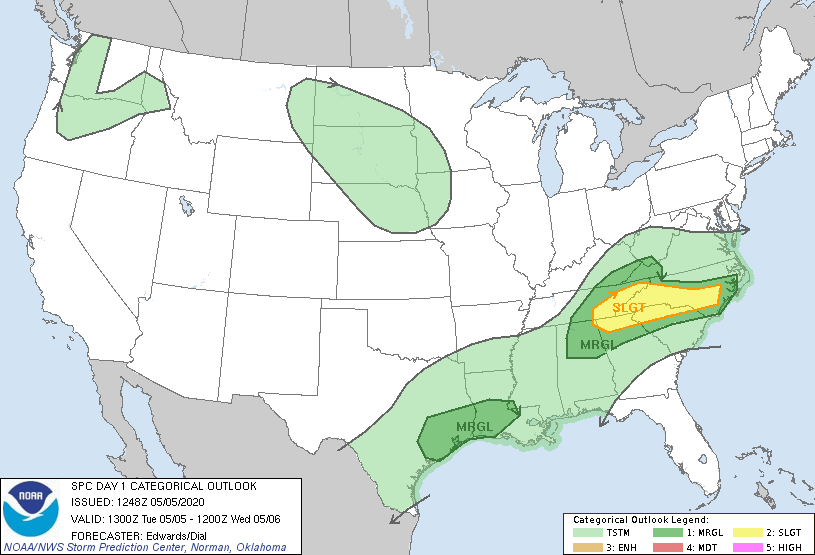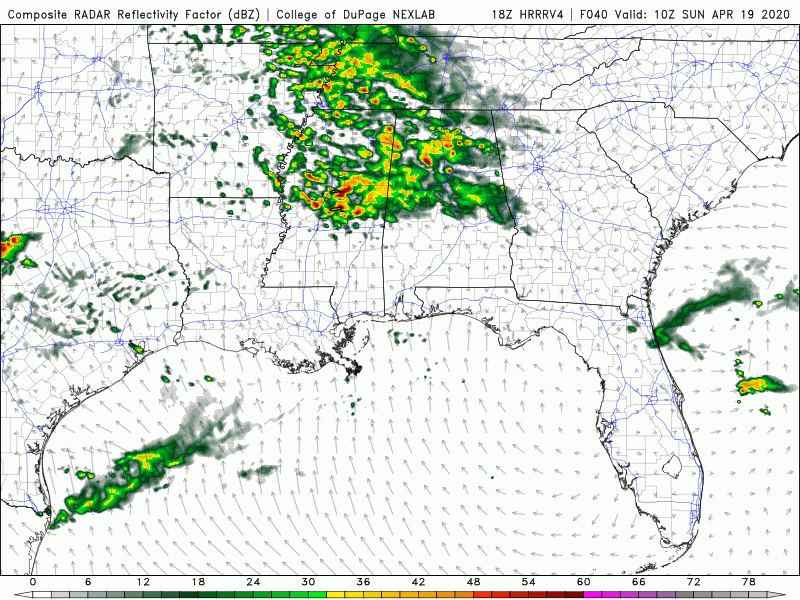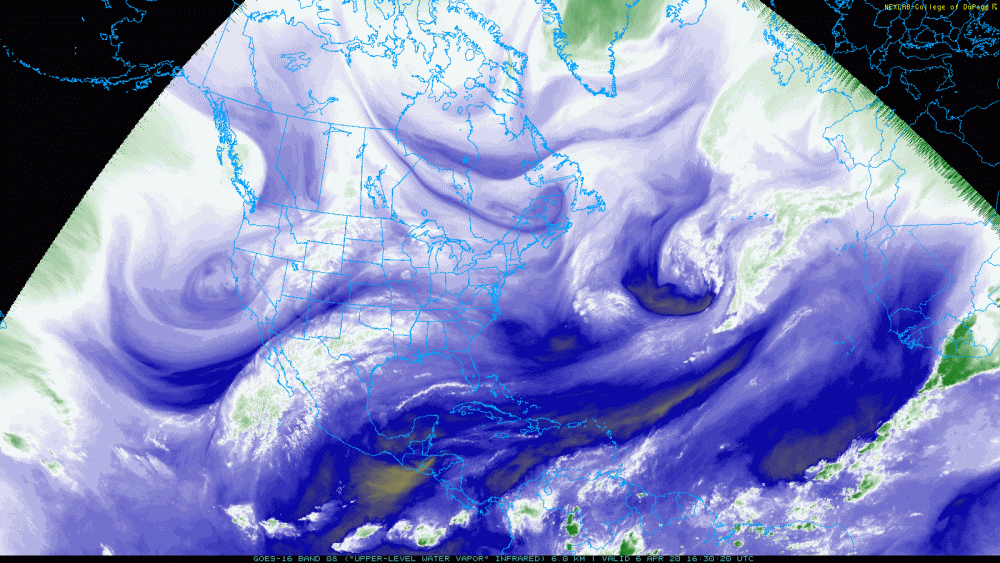-
Posts
283 -
Joined
-
Last visited
Content Type
Profiles
Blogs
Forums
American Weather
Media Demo
Store
Gallery
Everything posted by calm_days
-
Hopefully at this point of the future there is some protection from stronger storms due to the proximity of Sunny Point, as well as the nuclear power station! https://en.wikipedia.org/wiki/Military_Ocean_Terminal_Sunny_Point I am not sure what type of mitigation of hurricane strength is possible in 2021, but, it is doubtful that there has not been a safe and non-disruptive method discovered.
-
College of DuPage is really good i would say! They have site specific NEXRAD https://weather.cod.edu/satrad/nexrad/index.php?parms=GSP-N0Q-0-24-100-usa-rad and many different sizes of regional views that also offers full satellite imagery among other display options! https://weather.cod.edu/satrad/?parms=local-NC_VA-comp_radar-48-1-100-1&checked=map&colorbar=undefined
-

The updated NWS radar is terrible
calm_days replied to Heisy's topic in Weather Forecasting and Discussion
https://weather.cod.edu/satrad/nexrad/index.php ^^ For this one you do need to mouse over the topmost icon on the left that is overlaying the map, and click Radar Selection to choose from all of the locations! https://weather.cod.edu/satrad/?parms=continental-conus-comp_radar-48-0-100-1&checked=map&colorbar=data College of Dupage's sites thankfully are quite awesome, very configurable too, and very easy to download both animating loops and single images!! And, available through the second link are the options to show only every x number of frames which can allow a longer time period to view, here is an example! https://weather.cod.edu/satrad/?parms=continental-conus-comp_radar-200-1-100-4&checked=map&colorbar=undefined -
more is on the way!! The image being courtesy of gatorcane from storm2k
-
I was reading some posts on storm2k that refer to the large area of convection forming to the east of Isaias and remembered these images i had posted in 2015 of a similar phenomenon happening with ULLs! They are surprised it is as large as the main area of convection of Isaias. In watching the animated infrared and water vapor loops it is interesting that the shape of the storm did develop a more hybrid appearance, maybe it is a specific structure of any type of low pressure based system that results in enhanced convection to the east. /// Here is what they are saying! #3586 Postby tarheelprogrammer » Fri Jul 31, 2020 10:44 pm eastcoastFL wrote: Javlin wrote: hipshot wrote: Eric, I would still like to know what is the deal with Izzy's evil twin to the east? I appears to have some fierce convection and seems to pulse up and down in sync on IR with the twin to the west? That's what I am wondering also? Ya the thing to the east looks almost identical to Isa On IR It looks very similar to the blob that hurricane Matthew had attached to it:
-
RAH forecast discussion .NEAR TERM /TODAY THROUGH TONIGHT/... As of 1130 AM Tuesday... ...The risk for severe storms across central and southern NC later this afternoon and evening has increased... There are lots of mesoscale features to note that will all play a role in today`s convective evolution and thus makes it a complicated and difficult forecast. Lead MCV and round 1 of elevated convection has moved off the southern NC coast with satellite imagery showing an impressive dry slot immediately behind this feature. Meanwhile, across the SW Va and NC, a separate upper disturbance interacting with a plume of deeper moisture is producing an area of showers that will move east across along the NC-VA border over the next several hours. This rain will help to lock in a wedge of weak, but cool high pressure(in-situ CAD) across northern sections of the NC Piedmont and coastal plain zones. Trailing all these is yet another MCV approaching the southern NC mtns. While there is very little wx/rain currently accompanying this feature at the moment, it could help to spark additional convection across southern portions of the area later this afternoon, with associated rain-cooled air potentially helping to stabilize things ahead of the late afternoon/early evening convection that is expected to develop in response to the upper trough and associated cold front moving into the region. Finally, the quasi-stationary front across upstate SC will be especially important, returning as a warm front into southern NC, in advance of the trailing cold front that move east through the area tonight/early Wednesday. Aside from the batch of showers skirting the far northern counties, should see a mid day lull in rain/showers, though mostly cloudy skies will prevail. Will still have to see what becomes of the trailing MCV coming into the NC mtns, but still expect the emergence of a new/triple low to develop and ride east along the northward lifting warm front. Scattered thunderstorms are expected to develop ahead of the upper trough and cold front and will move west to east through the area between 21 to 04z. Amidst steep mid-level lapse rates spreading east into the area, warm moist air advection will result in 1000 to 1500 J/Kg of elevated instability across southern and central portions of central NC with the potential to realize sfc-base instability of 500 to 1000 J/kg across the far southern zones as the warm front lifts into the area. Given strongly curved hodographs across the area, this will set the stage for some embedded supercells to move through the area. If the warm sector does indeed become established across the far southern zones(this includes the areas from Wadesboro to Fayetteville to Clinton), damaging winds, large hail and an isolated tornado will be possible. Just north of this area, though the storms will likely be elevated, we could see some large hail, up to baseball size possible. The greatest threat is between 7 to 11 pm, approximately along and south of I-40. Convection chances will decrease west to east overnight with the passage of the cold front. QPF generally 0.25 to 0.50, locally 1 inch possible. ~~~ GSP discussion .NEAR TERM /THROUGH TONIGHT/... As of 1210 PM Tuesday: The latest satellite showed low to mid clouds gradually filling in from the west with showers and embedded convection straddling the northern mountains. Trends towards increased instability and updraft strength and continued likelihood of an organized squall line this evening supports SPCs extension of the slight risk of severe thunderstorms to more of the forecast area. The preferred mode of severe weather may begin with damaging hail with a few isolated tornadoes as the main threats due to the more discrete/isolated nature of convection early on and trend towards more of a wind threat later this evening. This is especially true along and east of I-77 as most guidance supports upscale growth of a broken squall line into a full blown mesoscale convective system. HREF continues to show rotating updrafts which could support a few tornadoes east of the mountains, however relatively high cloud bases may limit this potential. Deep moist convection also supports localized should training of cells occur.
-
Here are two saved radar loops showing the unique almost-homebrew mesolow feature!! This one has no frames skipped to see the most recent activity very smoothly: CODNEXLAB-GOES-East-subregional-Dixie-comp_radar-13_50Z-20200429_map_-100-1n-10-100.gif And this one is set to display every four frames so that the original MCS can be seen turning into this ongoing small low!! CODNEXLAB-GOES-East-subregional-Dixie-comp_radar-14_15Z-20200429_map_-100-4n-10-100.gif Before posting i checked an infrared loop and it is incredible to see, so i will share it as well! CODNEXLAB-GOES-East-subregional-Dixie-14-14_21Z-20200429_map_-100-4n-10-100.gif
-
.NEAR TERM /THROUGH SUNDAY/... As of 145 PM EDT Saturday: Forecast for the near term still extremely complicated. The first factor of concern is the slight risk encompassing most of the NC mountains, Upstate SC, and the NC Piedmont. This still appears to fit well with the area of greatest severe risk, focusing mainly on the evening hours. With many factors in play, however, there exists some uncertainty in the most likely severe threat and exactly where each type of threat will evolve. A robust upper wave and surface low are in the process of propagating towards the area this afternoon, with a warm frontal boundary draped over the Midlands lifting slowly northward towards the Upstate. We`ve intermittently broken out of cloud cover ahead of the approaching low today, and with high pressure to our northeast shifting off the NE coast, the wedge-like pattern that has been in place for much of today is beginning to erode across the area. Surface flow has been generally NErly for much of the day, though, which has limited low-level moistening, and dew points will likely only be able to peak in the mid 50s later this evening with the anticipated shift to Srly/SWrly flow over the next hour or so. The lack of robust surface moisture will likely be a large factor in limiting surface destabilization, as will the persistent cloud cover for much of the day. Despite this, there is no shortage of favorable factors for severe weather. Deep-layer shear across the area is already on the order of approx 50kt, and both directional and speed shear (especially in low levels) will increase through the afternoon as surface flow veers to S-SWrly. Additionally, a 500mb speed max is on approach towards the southern Appalachians, and the arrival of an upper jet exit region will encourage plentiful upper forcing later this evening, close to 00Z. The sharpening upper trough aloft over the southeast will also decrease temperatures aloft, manifesting in steep mid-level lapse rates this evening. Despite SBCAPE likely limited to 500-1000 J/kg, MLCAPE could exceed 1000 J/kg. With the excellent shear and sufficient CAPE, the mode of convection will likely end up supercellular, with supercells embedded in a squall line crossing the northern 2/3 of the forecast area from 23Z-04Z this evening looking like the most likely final outcome. All severe threats are in play, though hail rises to the top as the most likely threat with cool, dry air entering aloft and excellent lapse rates expected. The potential for wind damage (especially if convection can become at all linear) and for an isolated tornado (despite the lack of boundary layer moisture, which keeps LCL heights questionable) is still in play. It should also be noted that while the best forcing will be in place across the northern 2/3 of the forecast area and the greatest severe threat overall is there, the warm front lifting northward from the Midlands should be watched, especially for tornado potential as it locally enhances low-level SRH and boundary layer moisture. If you`ve made it this far, the good news is that the convection should clear our area by 05-06Z overnight, though some NW flow and wrap-around moisture will enhance shower activity in the mountains near daybreak tomorrow. Some moisture may even break containment, with showers possible across the majority of the NC mountains tomorrow, not just the TN/NC border. Though no accums are forecast at the current time, temperatures will drop enough tomorrow as upper heights drop that some light snow may be possible at elevations above 5000ft. the other story across the area will be wind - stout NW flow will encourage gusts up to 25+ mph outside the mountains, and up to 35+ mph in the mountains. Temperatures will be below average. GSP area forecast discussion is above! Yes, it is becoming much less vague that there are chances for severe here today. I think that once the beginnings of storms appear on radar there will be discussion happening!
-
Here it is so far. I've put it away from immediate viewing in case it is not accurate enough. It looks possible, but definitely an unusual setup.
-
The discussion is like that from GSP as well! It will hopefully not stick with confusing patterns for the models for the remainder of the springtime. Looking at the current overview, the additional layers of complexity are evident! .LONG TERM /THURSDAY THROUGH SUNDAY/... As of 306 AM EDT Monday: You would be hard-pressed to find a fcst with bigger differences between the model guidance out on days 5-7 than what we are presented with this morning. Before we get to that, we still have decent agreement for Thursday with a cold front running up against the mtns early in the day, warranting a chance over the mtns for the first half of the day. The guidance agrees the front will weaken and cross the rest of the fcst area dry in the afternoon, but not early enough to keep temps from making it back into the lower 80s over the Piedmont regions. The cooler air will finally make it into the region for Friday, with temps returning to normal, or maybe slightly below normal. From that point onward, though, the operational models diverge wildly and significantly as we get into next weekend, with both models sticking to their guns. In the near corner we have the GFS which has dry sfc high pressure moving slowly over the southeast and Carolinas with zonal flow aloft and a srn stream system hanging back over nrn Mexico. In the far corner we have the ECMWF with a progressive srn stream system that appears to feed on a tropical connection to develop widespread heavy rain and possible flash flooding associated with low pressure moving up the spine of the Appalachians. Wow. Needless to say, confidence is low. In this situation, we prefer to stick close to the previous fcst, the guidance from WPC, and the model blends until a consensus starts to form, so we will keep a chance of rain with temps near normal, which may seem unpalatable, but right now there are no good, safe bets. We look forward to a resolution.
-
It is possible to make bookmarks that directly lead to an animated GIF of the wunderground radar!! Basically, you can configure the settings through this page, including changing to a different radar site. https://www.wunderground.com/weather-radar/united-states/nc/raleigh-durham/rdu/ Mainly I would recommend setting the number of frames to 10 unless you prefer fewer! At the very bottom of the dark gray panel is the Save Image button. You can also right click the Save Image button and open a new tab if that is possible in your browser! Either way it will hopefully open a GIF all by itself, and you will be able to make it a bookmark! Visiting the bookmark on another day is somehow able to run all of the same settings that you initially selected and produce an up to date new radar image!! And of course, you can set up different zoom levels and radar angles, then, use the Save Image option again and you can bookmark those too!
-
Yes; Brick and others have been mentioning over the past few years that the once certain seasons for severe, especially autumn, have changed in that regard. I feel like it is at least a guaranteed interesting spring in terms of unusual weather systems, although I'm not sure if any would be severe, maybe just different enough to be noteworthy! I do think that there is at least a chance of a few to several colder wedge days during March and April.
-

The December to Remember 7th-8th blue turd winter threat thread.
calm_days replied to lilj4425's topic in Southeastern States
I think this has already been a very enjoyable/fulfilling system to watch in forecasts, and hopefully, most likely, it will turn out to be intriguing as it happens and as the thread title mentions, good to remember into the future! -
Are there links available to track Gulf of Mexico methane? I can't tell if changes I have noticed in water vapor behavior in relation to the Gulf of Mexico are from integration of comet dust (ISON & LINEAR) or from possible increased release from underwater that have been theorized to be possible since 2010 and earlier.










